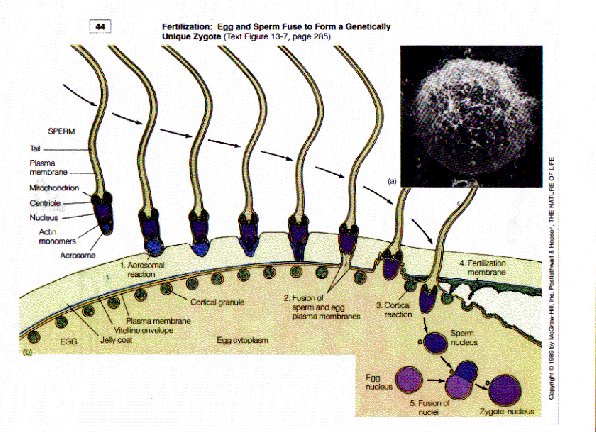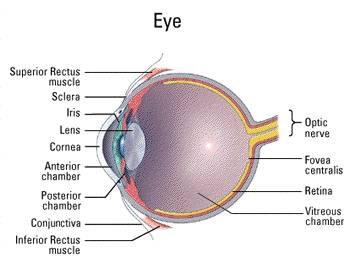Unit 3 Lab Project
For this lab I will be demonstrating the inner workings of a human elbow. I will show how muscle contraction works to move a limb. Starting with motor neurons that take information from the central nervous system to muscles fibers. To how the action potectial takes place in neurons and how they stimulate muscle contraction.

This picture represents the elbow. Shown in the three main bones involved; humerus, ulna, and radius. Along with the bicep muscle which is responsible for flexion. The bicep is conected to the bone by tendons allowing movement to take place. When the bicep contracts the lower region of the arm (radius and ulna bone) are pulled upward towards the humerus and bicep muscle. The parts are made from play dough and vegetables.

When a muscle contracts what is really happening is that the central nervous system sends a nerve impulse by means of a motor neuron to the bicep. A motor neuron has a cell body where the nucleus and other organelles reside, dendrites that receive signals from sensort receptors and other neurons. The axon and axon terminals. On the axon myelin sheath wraps form where neuroglia cells called Schwann cells wrap themselves around the axon in many layers. Gaps occur making nodes of Ranvier because neuroglia cells only cover part of the axon. Axon terminals lie very near dendrites or the cell body of other neurons. A motor neuron is shown in the following photo.

The following five photos show action potential (nerve impulses). When the central nervous system generates a motor response, a nerve impulse travels throught motor neurons to the muscle. When this nerve impluse or action potential happens a few things take place along the axon. First being that sodium gates open allow Na+ to flow into the axon changing the membrane potential from negative to possitive ,depolarization, as shown in right picture. The second thing that takes place is the potassium gates open allowing K+ to flow to the outside of the axon. As this happens the action potential changes from possitive back to negative, repolarization.


The following three photos are a close up view of above two photos. The first one is showing a resting potential. No nerve impulse is taking place in the neuron.

The next two show action potential taking place. The photo on the left is the begining of action potential. Depolarization occurs since the Na+ gates are open allowing Na+ to flow to inside of the axon. The photo on the right is the ending of action potential. Repolarization in the axon takes place since the K+ gates are opening allowing the flow of K+ to move to the outside of the axon.


After action potential takes place and the nerve impulse the muscle it travels down the T tubule which causes calcium to be released from the sarcoplasmic reticulum. The Ca2+ that is released combines with troponin, protein apart of actin filament, causing the tropomyosin (another protein) threads to shift their position. Resulting in myosin binding sites. This is where ATP in the form of ADP + are bound to myosin as a myosin head and attaches to actin. A power stroke takes place moving the actin fiber resulting in muscle contraction. This procedure is repeated until muscle is contracted to the desired position. The following two photos are showing an actin filament before and after calcium is released exposing myosin binding sites.


These last two photos are showing how when the myosin head attaches to the actin at the myosin binding sites a pulling or sliding action takes place resulting in a contraction of a muscle. Below a sarcomere is being show which by definition is one of many units arranged linearly within a myofibril, whose contraction produces muscles contraction. A sarcomere is composed of actin filaments and myosin filaments. The first photo shows a relaxed sarcomere or relaxed muscle.

This photo shows the sarcomere contracted which results in a contracted muscle.

In conclusion it is really important to understand how all these different parts all aid in contracting a muscle. From the nerve impulse sent from our central nervous system to the bones, joints and tendons that support and allow movement. The system works together and without one compont it will not function properly.
Work Cited: Madder, Sylvia S. “Human Biology” 10th ed. New York: McGraw-Hill, 2007.











































 This photo shows the sarcomere contracted which results in a contracted muscle.
This photo shows the sarcomere contracted which results in a contracted muscle. In conclusion it is really important to understand how all these different parts all aid in contracting a muscle. From the nerve impulse sent from our central nervous system to the bones, joints and tendons that support and allow movement. The system works together and without one compont it will not function properly.
In conclusion it is really important to understand how all these different parts all aid in contracting a muscle. From the nerve impulse sent from our central nervous system to the bones, joints and tendons that support and allow movement. The system works together and without one compont it will not function properly. 






